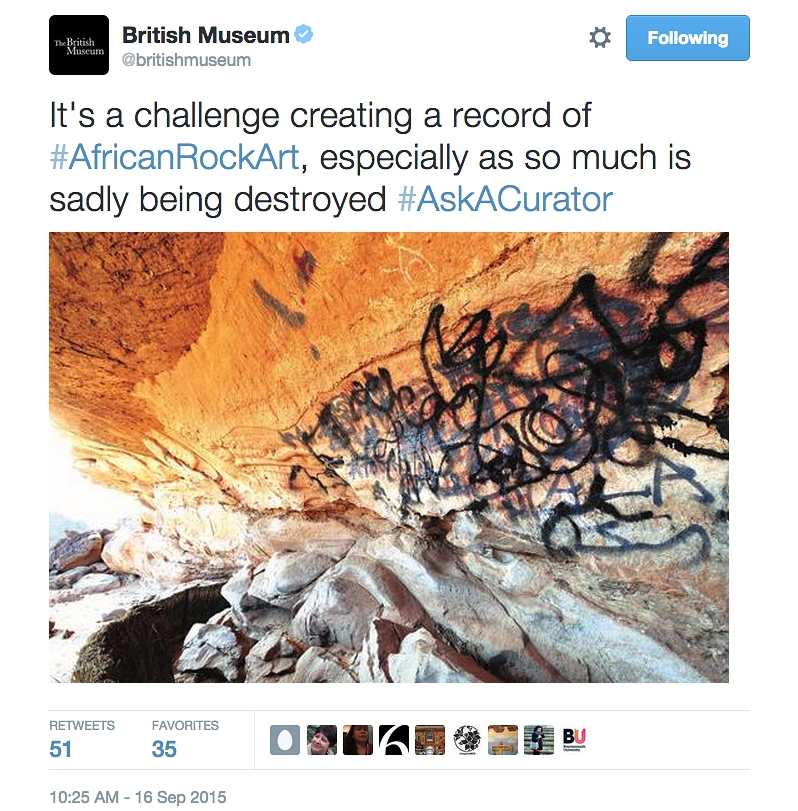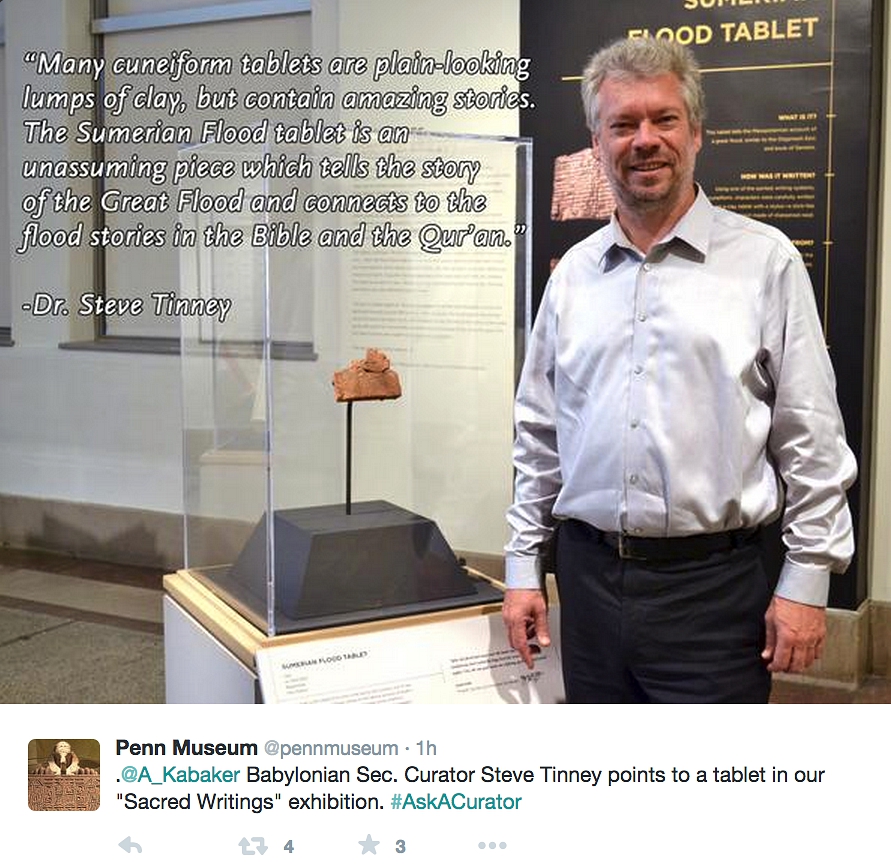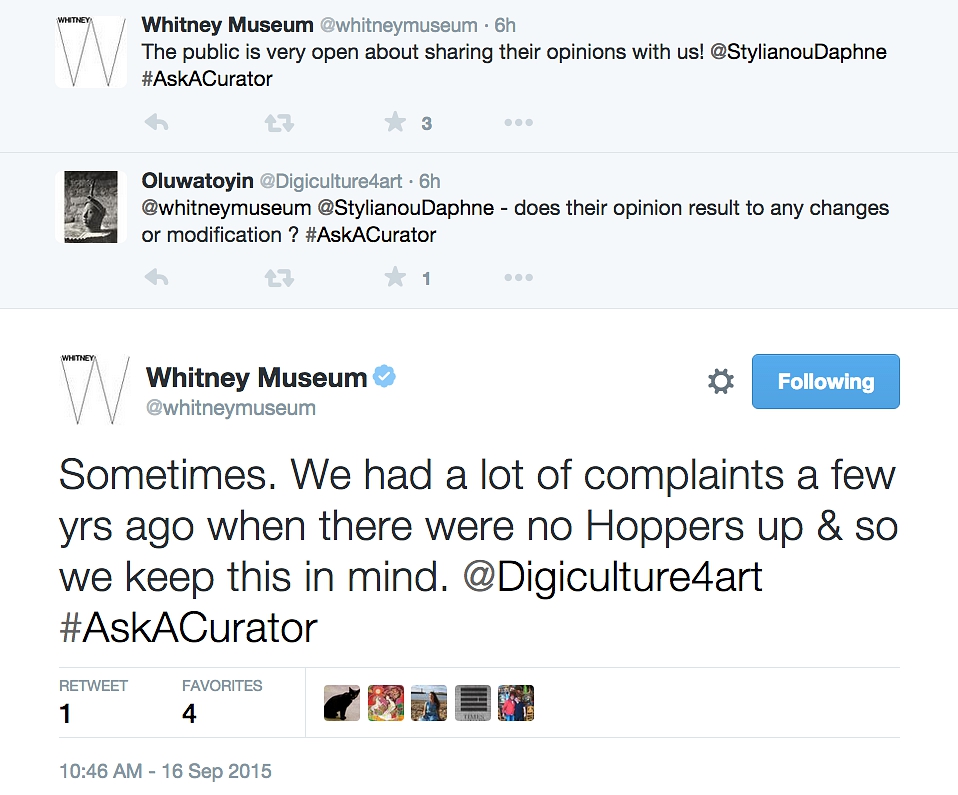The first-known written description of a skunk by a Jesuit missionary in 1634 is my very favorite thing.
The other is a low animal, about the size of a little dog or cat. I mention it here, not on account of its excellence, but to make of it a symbol of sin. I have seen three or four of them. It has black fur, quite beautiful and shining; and has upon its back two perfectly white stripes, which join near the neck and tail, making an oval which adds greatly to their grace. The tail is bushy and well furnished with hair, like the tail of a Fox; it carries it curled back like that of a Squirrel. It is more white than black; and, at the first glance, you would say, especially when it walks, that it ought to be called Jupiter’s little dog. But it is so stinking, and casts so foul an odor, that it is unworthy of being called the dog of Pluto. No sewer ever smelled so bad. I would not have believed it if I had not smelled it myself. Your heart almost fails you when you approach the animal; two have been killed in our court, and several days afterward there was such a dreadful odor throughout our house that we could not endure it. I believe the sin smelled by Saint Catherine de Sienne must have had the same vile odor.
Sophianotloren
Shared posts
theunbrilliant: The first-known written description of a skunk by a Jesuit missionary in 1634 is my...
The (Final?) Cost of Ben Radford’s Libel Bullying: About $5K
The story thus far: skeptical writer Karen Stollznow accused deputy editor of Skeptical Inquirer magazine Ben Radford of sexual harassment. I reported on that. Radford sued Stollznow for defamation. I reported on that. Before the case went to court, Stollznow apparently signed a retraction. I reported on that. Radford threatened to sue me for my reporting. I reported on that, while hiring a lawyer to protect myself and starting a fundraiser to cover the costs of that lawyer. Radford then seemed to change his mind about suing me.
Though Radford may still change his mind again and decide to sue me, I’ve closed the fundraiser and collected the funds. The total funds raised were $9,606. After 3% + $0.30 per transaction payment processing fees totaling $356.58, the final sum was $9,249.42. Thank you so much to everyone who donated. You made this process so much less stressful than it could have been, for reasons I’ll now briefly detail.
So much of the process of hiring lawyers to battle one another is shrouded in secrecy, which I believe is mostly due to lawyers (rightly) trying to protect their client from any kind of lawsuit. Lawyers know that you can get sued for pretty much anything, even if you’re in the right, and so I believe that they’re generally very cautious about what they recommend you talk about publicly.
Still, I think there’s a huge public interest in understanding exactly why libel threats are so often successful at censoring speech. In my experience, it comes down to two reasons: the enormous potential cost (both financial and psychological) of going to court, and the slightly lower enormous actual cost (both financial and psychological) of what happens before you even get to a courtroom.
You can probably try to imagine the psychological costs, if you’re familiar with great amounts of stress over financial issues. Lack of sleep, upset stomachs, lost hours staring at walls, and generally being no fun at parties are the primary results of stress for me. “Hey Rebecca, what are you up to these days?” “GIVING A LAWYER ALL MY MONEY WHY DO YOU ASK???”
You’re probably less familiar with what the actual financials are in a case like this. I know this is true thanks to the many people (well-meaning friends included) who informed me that one can consult with a lawyer for free, and just getting them to respond to a cease and desist shouldn’t be very expensive. If you take nothing else from this post, take this: if you have no idea what you’re talking about when it comes to legal issues like this, don’t offer “friendly” advice. You’re just going to make the aforementioned psychological cost that much worse.
My lawyer has sent me what we both hope will be his final bill for this matter, assuming that Radford doesn’t move forward on his initial threats.
The bill totaled $4,984.22.
It came with a very helpful itemized list showing every minute my lawyer worked on this case, which amounted to quite a few hours of work. And remember: this is for a case that never went to court, and hasn’t actually resulted in a filing (yet). Also, I’ll say that my lawyer was very, very kind when it came to the final tally of hours worked.
A large part of that cost was due to the initial vagueness of Radford’s threat, and our repeated attempts to gain any kind of understanding of what exactly he felt was libelous and what actions he wanted me to take. There were several letters sent to Radford’s attorneys and even an in-person meeting, none of which resulted in any satisfying answers, which is the point at which I went public.
Another detail to note is that to hire my lawyer, I needed to come up with a retainer of several thousand dollars. I couldn’t go public at that point, so I needed to use credit cards to do it and hope that I could come up with the money later (which I did, thanks to many of you who donated).
Again, I’m detailing all this publicly so that you truly understand the enormous cost of protecting speech and that you bear it in mind the next time you hear someone make threats to sue for defamation.
After deducting the cost of my legal fees, I’ll be left with $4,265.20 from the fundraiser. I’ll have to pay taxes on the full $9,249.42 that I collected, which I estimate to be $2,312.36 for federal and $739.95 for state, so $3,052.31 total. Yikes.
Still, that leaves a total of $1,212.89 that I’ll have leftover to donate as soon as I get a solid indication that Radford has left me alone for good. As I mentioned previously, all leftover money will go to either anyone else Radford has threatened or the EFF. I’ll post an update once I’m able to do that.
Once again, thank you to everyone who donated and who offered their support. Special thanks to Ken (@Popehat) for helping me find the best libel defense lawyer in New Mexico and for giving me that sweet, sweet free advice I’ve heard so much about, even though that free advice did amount to “hire a lawyer immediately.”
Saturday Morning Breakfast Cereal - Springtime

Hovertext: EAT MY HEAD OFF WHILE MY TORSO HAS SEX WITH YOU
New comic!
Today's News:
Only 12 tickets are left for BAHFest East as of 10am this morning. I'm gonna try to open up a few more if we can! If you missed out, stay tuned.
Wish me luck, here goes nothing.
Tomorrow (it’s not “tomorrow” until I’ve slept and awakened again, I don’t care what you say, even if it is just over 12 hours from now) evening at 6pm I have an appointment to meet someone who’s renting a room. A real person who responded to one of my “housing wanted” ads on craigslist, who might — potentially — have a place for me to call home.
I’m working to keep my expectations in check; I know that my tendency when faced with a positive upcoming situation is to get blinded by the “new carpet smell,” if you’ll follow me through my mixed metaphors here, to only notice the awesome stuff and to minimize the bad things. I’ve ended up in more than a couple situations that really turned out shitty because of that — and I want… I need for the next place I move to be a long-term home, not something that’s going to fall apart because I was so full of NRE (of a sort) with the place I was checking out that I ignored anything that wasn’t “THIS IS MY PERFECT FOREVER HOME!!!!11one!!” I’m going into this knowing that the address is on somewhat of a main thoroughfare, which has the potential to mean lots of noise. I’m reminding myself of the things I need to bring up as interview questions — a moderate list of things that I’ve learned (mostly the hard way) that are important to me in sharing a living space.
And — for me, this is the most critical thing — when this little meeting is done, my last question will be “Can I get back to you in a day or two with my answer?” If there’s hesitation, or a push to get me to answer on the spot, I call things off. I know that I cannot make a rational decision in that moment, and I won’t try to do so. And if this is someone who I’m going to be living with for several years, then she sure as fuck better be able to handle “I’d love to discuss this, as soon as I am able to take the space I need to process things… and the more you push me to engage right now, the worse the outcome will be.” Shit, that’s basically what destroyed MFP and I as a couple — she needed to immediately engage when she felt something was wrong (and to continue to engage until she was satisfied with the outcome,) and I needed to take enough space from the situation when something was wrong to be able to sort out my own thoughts and feelings about what was happening and how to proceed. You can imagine that this… didn’t work very well. So, if I’m going to live with someone for that long, I need that to be someone who can handle giving me the space to make decisions, especially ones as significant as making a home.
Anyway, I should be sleeping… so here goes nothing.
Filed under: General
3 dancers and 24 dronesDemonstration of work by Japanese tech...



3 dancers and 24 drones
Demonstration of work by Japanese tech art dance group ELEVENPLAY and Rhizomatiks of proof-of-concept performance with dancers and drones
Artistic direction and Choreograph: MIKIKO(ELEVENPLAY)
Music: Setsuya Kurotaki(Rhizomatiks)
Dancer: SAYA SHINOHARA, YUKA NUMATA and ERISA WAKISAKA(ELEVENPLAY)
Artistic direction and drone + light programming:
Daito Manabe (Rhizomatiks)
Light drone design and development : Motoi Ishibashi, Tomoaki Yanagisawa, Momoko Nishimoto
Light drone development : Tomoaki Yanagisawa, Youichi Sakamoto, Katsuhiko Harada
Support: Rhizomatiks and ELEVENPLAY
H/T: gergokovacs
Dan Weiss’s Morning Coffee
 Life in California gets bleaker everyday: now we’re running out of pistachios.
Life in California gets bleaker everyday: now we’re running out of pistachios.
On the evolution of city hall architecture.
Daffodil revenge is the meanest revenge.
Meanwhile: the robots have taken over deep sea exploration too.
Did we make dogs lazy thinkers? (spoiler alert: inconclusive!)
Related Posts:
- No related posts…
11 Things that Are Surprisingly NOT Running for President
RT @Vinncent: sometimes people on Facebook say stuff that is actually really good...

|
|
What Do David Lynch’s Movies Say About Sex?
[Pete and Alice are having sex]
Pete: “I want you!”
Alice: [whispers in his ear] “You'll never have me.”
- Lost Highway
Of all the terrifyingly true things David Lynch has said, this rings the loudest bells for me: “Sex is a doorway to something so powerful and mystical, but movies usually depict it in a completely flat way…” He’s dead right. Despite the ubiquity of sexual imagery and objectified women, sex is still one of our biggest taboos, and its representation in mainstream and even much independent film still so unsophisticated, so uniform, so unlike the experience and diversity of the real thing.
Lynch’s strange, disorienting, and often downright creepy take on sex – a background but essential part of his trademark – is set to haunt our screens and psyches again with the new iteration of Twin Peaks, written and directed by the man himself, to start shooting in September for the Showtime network.
Read more What Do David Lynch’s Movies Say About Sex? at The Toast.
“Femme On Femme” Is The Most
Friend of the Toast Sara Cantor (she's single, ladies) just guest starred in her first-ever music video, describing it to me thusly: a "disco witch sex coven commits femme-on-femme glitter bondage." Reader, I watched it.
Read more “Femme On Femme” Is The Most at The Toast.
unicornempire: ryannorth: startrekships: airyairyquitecontrary...






KIRK THIS WHY YOU GOTTA FILL OUT THE LOG
I’ve heard the theory that Kirk’s logs just get circulated round headquarters for lulz before being dumped in the circular file as obvious fabrications by someone bored with a frontier posting.
“Hey, have you seen this one? He says he fought Apollo.”
“What, the old earth probe?”
“Try the old earth GOD!”
“Hilarious! Classic Kirk! That’s better than the time when he was transported to an evil dimenison.”
The reason why in The Naked Now it was Riker who remembered that the previous polywater infection had happened is that he’s the sort of person who would read The Hilarious Adventures of Captain Kirk for fun.I especially like this idea because of the implication that all the other captains in Starfleet are reporting perfectly ordinary experiences like visiting a space station, dropping off supplies at a colony, bit of a stand-off with some Klingons in disputed space but got out of it unscathed - and then there’s Kirk all, “sorry guys we’ve been off course this week because my first officer seriously needed to get laid (LIKE YOU HAVE NO IDEA MY NECK STILL HURTS)” and “let me tell you about the Chicago Gangster planet” and “WHIPPED AND THROWN IN JAIL BY SPACE NAZIS.”
I actually really like the above explanation
I thought this was already canon
It would be pretty hard to believe a field report where evil doubles had pointy mustaches and such. I can’t really blame them.
A Portal to the Other Side of the Earth

Portal at Yale University (image courtesy Shared_Studios)
WASHINGTON, DC — If pricey airfares have kept you from going abroad lately, you can travel by shipping container for free thanks to Shared_Studios’ Portals. Painted a lustrous gold on the outside and furnished with premier audio-visual technology inside, these spacious crates offer incomparably quick travel times to Mexico, Honduras, Cuba, Afghanistan, Iran, and more. The only downside is your adventure is limited to 20 minutes.
Shared_Studios launched the portals in December 2014, and they’ve been making their way across the world ever since. The latest portal cropped up on the University of Maryland’s campus, where participants signed up for 20-minute immersive video chat sessions with people located in either Herat, Afghanistan; Tehran, Iran; Mexico City, Mexico; or El Progresso, Honduras. Translators are on hand to facilitate conversation, but if you share a language with your chat buddy, you’re left alone with them to make small talk in what feels like the same room.
An art, design, and technology collective, Shared_Studios’ projects all have a social practice bent to them, seeking to connect disparate communities through communication and creative collaboration. Founders Amar Bakshi and Michelle Moghtader both have a background in foreign correspondence — Bakshi used to travel on behalf of the Washington Post and Moghtader has traveled throughout the Middle East and her writing has been featured on Reuters and CNN. By connecting geographically distant people in an immediate and sensorial way through their projects, Bakshi and Moghtader essentially cut out the media middleman — the journalist.

Afghan participants perform for American visitors in UMD’s Portal (photo by the author for Hyperallergic)
Nevertheless, the project faces some of the same hurdles journalists come up against, namely that of unbiased reportage. Consider that the majority of the portals have been set up on leading college campuses (US venues include Yale, Georgetown, and soon Vanderbilt) or in conjunction with art galleries. Alternatively, the portals are installed in large, expensive, liberal cities like New York, San Francisco, Mexico City, Herat, etc. To a point, this is unavoidable since universities and urban centers have the necessary resources and people to enable the portals. Yet it also skews the participating demographic toward affluent (or at least comfortable), educated, and open-minded young professionals.
I stepped into the University of Maryland portal at 10:30 pm and met Omid, a 20-something in Afghanistan who was just waking up (it was 7:30 am over there). I don’t speak Farsi, but thankfully he spoke perfect English. We chatted congenially about our jobs, upcoming holidays, and what we studied in school. Omid is in the process of applying to scholarship programs to go abroad for his Master’s; having recently completed my own MA, we commiserated over the outlandish cost of graduate programs. His smartphone dinged a few times with Facebook Messenger notifications — a reassuring global constant. I pulled out my phone and suggested we become Facebook friends; within a few minutes we were messaging each other outside of the portal.

Herat portal under construction (image courtesy Shared_Studios)
In reality, the portals offer a glimpse of distant lives, but not-so-distant lifestyles. Perhaps in an effort to expand the conversation, Shared_Studios recently announced that they will connect to Zimbabwe and Jordan’s Zaatari Camp for Syrian refugees at the end of the month. But for now, as millennials with access to education and wifi, it’s fairly easy for Omid and me to be friends.
Correction: A previous version of this article incorrectly stated that Michelle Moghtader was from Iran and wrote for CNN and Reuters while she was there. This has been fixed.
The Portal at the University of Maryland was on view at the Clarice Center for the Performing Arts (College Park, Maryland) from September 9–15; it will reopen at Vanderbilt University’s South Patio Lawn on September 18 and remain on view through October 18.
20 Facts About Living in Poverty That Rich People Never Have to Think About
 If you've never been poor, you probably believe some of these common misperceptions about the lives of people in poverty. Here's the truth.
If you've never been poor, you probably believe some of these common misperceptions about the lives of people in poverty. Here's the truth.Cops Don't Deserve Your Anger, According to Cop Leader
Yeah, walk a mile in their motherfuckin' shoes, dicks. Lynch goes on, "In the unfortunate case of former tennis pro, James Blake, -- who was clearly but mistakenly identified by a complainant -- there certainly can be mitigating circumstances which caused the officer to handle the situation in the manner he did." So obviously, the cop thought Blake was a violent criminal capable of...oh, what? The crime was credit card fraud? You fucking kidding? Then fuck that thug, Frascatore, and the mob boss, Lynch, who is trying to cover the thug's ass.
Lynch says, "[N]o one should ever jump to an uninformed conclusion based upon a few seconds of video. Let all of the facts lead where they will" and that cops should get a pass on such judgment because "of the dangers we routinely face." Attacking reporters all the way through, Lynch concludes, "Due process is the American way of obtaining justice, not summary professional execution called for by editorial writers."
Tell you what's not "due process," asshole. When cops routinely use excessive force in cases like this, like Eric Garner, like many, many other ones where people are either innocent or have committed, at best, non-violent crimes. And let's not even get into the militarization of the cops that has made shit so much worse, with entire SWAT teams beating up and degrading people based on misinformation. Officers in those moments are pretty much saying, "Fuck due process," and becoming judge, jury, and, in the worst cases, executioner, doing shit that, without a badge, would put anyone behind bars. The cops routinely deny people the rights that Lynch whines that his officers deserve. Respect gets respect, fucker.
At one point in his pissy little screed, Lynch bitches about accusations against Frascatore, "That is irresponsible, unjust and un-American." No, that's free speech, man. We know you have a problem with constitutional rights, but, Jesus, that's an easy one.
Look, being a cop can be a suck-ass gig. We get that. You have to deal with shit that nobody not on the job would ever understand. We keep hearing that it's only a few bad apples, that most police officers are good people who want to work to make their communities better. But you gotta be willing to give up the shitheads who fuck it up for you, who make you seem like you're the enemy. This Frascatore cocksucker should have been out of a job a long time ago.
And, frankly, Lynch looks like a total stooge for not getting out front and saying, "Yeah, this guy needs to go. He makes the rest of us look like shit."
WebGLStudio.jsWeb-based app allows you to create interactive 3D...




WebGLStudio.js
Web-based app allows you to create interactive 3D graphics within your browser:
WebGLStudio.js is a platform to create interactive 3D scenes directly from the browser.
It allows to edit the scene visually, code your behaviours, edit the shaders, and all directly from within the app.
23 Must-Follow Feeds in the World of Design
Prosthetic Knowledge | Tumblr
An enriching and scrollable journey through the most intriguing art and technology projects on the web, shown mostly as hypnotic GIFs. Be warned, this feed is highly addictive.
Thanks wired!
Banksy and Sarcasm
How wonderful it must feel to go to “Dismaland” and see through society! But how awful to see society embrace art that makes you feel nothing, that makes you think only about the vast chasm between you and everyone else.
In an essay in the New York Times Magazine, Dan Brooks writes about street artist Banksy, kitsch, and the zeitgeist of our times.
Related Posts:
Performance Hazards, Odd Objects, and More Insights from #AskACurator Day

Anthropologist Albert Ernest Jenks, who created the Department of Anthropology at the University of Minnesota in 1918 (via Smithsonian Institution/Flickr)
Today is the 2015 edition of Ask a Curator day. According to coordinator Mar Dixon, 1,072 museums in 51 countries are participating. While those whose time zones have now gone into night have dropped out, some institutions are still tweeting answers to questions from the public with the hashtag #AskACurator.
It’s always an interesting opportunity to pose some questions about museums and their collections. For example, I was long curious if the 1920s glass casket at the Corning Museum of Glass was ever on view. I tweeted my question, and Senior Curator Tina Oldknow quickly responded that it was not, but it was featured on NPR’s Hidden Treasures in Museums and in the subsequent book written by Harriet Baskas.
Here are a few other highlights from #AskACurator queries, revealing overlooked objects, museum trivia, and challenges in preservation.
Some questions are pretty sharp and reveal the curators’ specialized knowledge. In response to the question: “Is there a work in the collection that best encapsulates crossover between Egyptian and Classical culture to you?” Phoebe Segal, assistant curator of Greek and Roman Art at the MFA Boston, shared this Greek “Torso of a Youth” based on an Egyptian work.

(screenshot via Twitter)
And here is an unexpected object from the Smithsonian Institution’s National Air and Space Museum in response to the question: “Do you any [sic] presidential aircrafts/items in your collections?”

(screenshot via Twitter)
Likewise, this unexpectedly morbid (but fascinating) response by the History, Art & Archives of the US House of Representatives to the question of if they had a favorite item related to John Quincy Adams:

(screenshot via Twitter)
Other questions relate to the process of preservation and conservation, which can be especially challenging if your focus is in-situ art. Elizabeth Galvin, curator of the African rock art project at the British Museum, answered the question: “What are the most challenging aspects of the project?”

(screenshot via Twitter)
Curators also have to recognize the value in things that might seem mundane. Dr. Steve Tinney at the University of Pennsylvania Museum of Archaeology and Anthropology answered the question: “Any examples of a plain-looking or everyday object with an extraordinary or exciting back story?”

(screenshot via Twitter)
How much do audience opinions actually impact curation? The Whitney Museum shared that people were none too pleased when no Edward Hopper pieces were on view, something the museum has kept in mind.

(screenshot via Twitter)
And there are the hazards of performance art, as with this incident designed by Albert Serra to cleanse the auditorium before his film screenings:

(screenshot via Twitter)
Museums are also using the opportunity to share some odd objects, like this goliath book at the Fred W. Smith National Library for the Study of George Washington at Mount Vernon. The library added that the huge book is the surely riveting 1939 Burke’s genealogical and heraldic history of the landed gentry….

(screenshot via Twitter)
And this from the National Museum of American History:

(screenshot via Twitter)
And some quieter works that go overlooked, such as these examples from the Metropolitan Museum of Art:

(screenshot via Twitter)
As well as some personally precious objects, the kinds of things curators come across in their collections but don’t often go on view, like this from Julian Harrison, curator of early modern manuscripts at the British Library:

(screenshot via Twitter)
#AskACurator Day 2015 continues on Twitter through midnight on September 16.
The Weird, Wide World of an Internet Flea Market

Seen at the Internet Yami-Ichi in New York (photo by Claire Voon)
The signs, printed in black and white and taped to the poles supporting a camping tent, advertised: “Rinzo Shimizu Gazing.” Pay just $1 and you could “gaze at Rinzo Shimizu (my dad), sleeping in Tokyo, in real-time, as much as you want.” Credit cards accepted, thanks to Square. The son and seller, Qanta Shimizu — who wore thick glasses and an oversized T-shirt from NYU Langone Medical Center, the kind you can imagine getting for free — paced in front of the tent and checked his phone in between grateful acceptances of the bills of curious visitors. As he did so, he sometimes disclaimed, “It’s really boring, actually.” People shrugged and entered anyway.
Can the internet exist away from the keyboard (AFK)? What does it look and feel and smell and sound and taste like (besides a screen)? Is it sitting inside a tent in a factory-turned-arts-space in New York City, watching a man sleep in his home in Tokyo via a live feed? Hell if I know.

The Internet Yami-Ichi at the Knockdown Center, with Qanta Shimizu’s tent at right (all photos by the author for Hyperallergic unless otherwise noted) (click to enlarge)
These were the questions raised — both intentionally and not — by the Internet Yami-Ichi, a “free to attend ‘Internet-ish’ flea market” that took place at the Knockdown Center last Saturday. Organized by the artist exonemo, the collective/secret society IDPW.org, the curator Chris Romero, and art management service Eri Takane, the event was the first US edition of the Internet Yami-Ichi, originally founded by IDPW.org in Tokyo three years ago. It featured more than 100 vendors (the largest one yet), who filled the cavernous former door factory in Maspeth, Queens, with artworks, stickers, temporary tattoos, performances, prescriptions, books, zines, clothing, canned meat, customized virtual reality experiences, and a bewildering array of things in between.
How, for instance, does one classify the “Internet Panties” on sale at Annie Malamet and Darla Bell’s table — colorful, lacy pairs of underwear (and one bathing suit) that Malamet “wore for long stretches of time on the internet,” as she put it? Keeping confident watch over a table filled with her own undergarments, she explained the pricing matter-of-factly: “The more depressed I was, the more time I spent switching between apps and falling asleep in bed, the more expensive” (range: $10–30). Not far from Malamet, you could pay $1 to have your portrait drawn by two men who call themselves The Human Printer; trade $2 to send a piece of actual, greasy spam in the mail ($3 for international); shell out $5 for a bare bones flipbook of “a Japanese business bachelor’s lunch & dinner Instagram” (the cover of which inexplicably featured P. Diddy); or drop $75 on a surprisingly gorgeous scarf patterned after an “infamous” computer virus, by Glitchhaus. Qanta Shimizu’s tent was also nearby.

Annie Malamet with her “Internet Panties”

Literal spam mail
“I just wanted to commercialize my dad,” explained Shimizu, a founder of the creative agency Party, whose adjacent table featured one of the market’s likely most-Instagrammed attractions: a hamster selfie wheel. Shimizu said he’d shown at a previous Internet Yami-Ichi in Tokyo — where visitors could pay to have a conversation with his dad — and found it “a very limited thing, too limited to a specific culture.” New Yorkers, he said, “recognize diversity and are accepting. It’s easy to make this kind of work here.”
It’s unclear what tents have to do with the internet, but Shimizu was not alone in bringing one to the Knockdown. Artist Michael Sarff — who comprises one half of early net art duo MTAA and who enthusiastically described the Internet Yami-Ichi as “a bad, crappy swapmeet for this culture” — had pitched a tent too. He used it to house his riff on Brian Eno’s Music for Airports, “Music for Music for Airports,” and for no money at all, you could go inside, sit on a space blanket, and absorb Sarff’s mesmerizing, live virtual navigation of a series of airports while listening to Eno’s album on YouTube (and pushing it through a “bad effects pedal”). The price for taking it home, on the other hand, was high: $800, by my unofficial research the most expensive item at the market (the hamster selfie wheel was $200).
There were a handful of other similarly serious art projects, including a stock photo database being built by the duo Malaxa that features exclusively images of people of color. Most others, however, relished playfulness (Faith Holland’s temporary tattoos of softly colorized cum shots, $3) or took such a deadpan approach to their own absurdity that they inspired a mini existential crisis: There is brilliance in the idea of the NoPhone, a plastic rectangle that’s roughly the size of an iPhone and does nothing. But is that idea worth $9.99?

The NoPhone guys
In general, vendors seemed less interested in selling things and more focused on engaging people, trading on the ease of parting with one or a few dollars for something that sounds neat or funny — a kind of AFK equivalent of Kickstarter. Interestingly, the end goal of these interactions was not necessarily objects (though they were often included) but the experience itself. So, for example, for $2 you could buy a keychain with a mundane image that artist Sessa Englund had posted on Instagram; upon purchase, she would, with a mixture of wistfulness and triumph, delete the photo from her feed while you watched. Just $1 got me an enjoyably trippy virtual reality journey on a train car plastered with cats. The tangible internet, it turns out, is fairly intangible.
“It’s weird to talk about the internet in those terms anymore, as an aesthetic,” said writer Dylan Schenker, who, along with writer Corinna Kirsch, had created and sold out of an “Internet Encyclopedia” zine (sample entry: “Babycore: A fashion trend dominated by baby-doll dresses and choker necklaces from the 1990s.”) “This is the way things are — it’s become a language, a lingua franca.” And indeed, despite the glitch scarves, the unifying feature of the Internet Yami-Ichi was not a pixelated look but a deeply human feeling: of delight, of reveling in the possibility of an internet removed from itself, of having to put on pants and leave your room.
In the end, it’s highly debatable whether we were paying for experiences we’ll truly remember or just buying into the myth of a shared subculture. Still, I was pleased to have brought home far less random crap than I would have if I’d attended an ordinary flea market. One of the few mementos in my bag that wasn’t a slip of paper or a memory was a mysterious flash drive that I bought for $1 during the TH CH Meme Traders’ end-of-day fire sale. When I got home, I inserted it into my computer and pored over the contents: animations, glitch videos, strange screenshots … and a folder entitled “poop collection.” Inside were 10 amateur videos of different animals pooping. Some things are better left on screen.

The TH CH Meme Traders at work

The Internet Yami-Ichi at the Knockdown Center
The Internet Yami-Ichi in New York took place on September 12, 12–8pm, at the Knockdown Center (52-19 Flushing Avenue, Maspeth, Queens).
Three Famous Artists Collaborate on One Empty Spectacle

‘Tree of Codes,’ directed and choreographed by Wayne McGregor, visual concept by Olafur Eliasson, and music by Jamie xx. Performed by dancers from Paris Opera Ballet and Company Wayne McGregor in the Drill Hall, Park Avenue Armory on opening night (all photos by Stephanie Berger unless otherwise noted)
Tree of Codes, the current modern dance production at the Park Avenue Armory, brings together the efforts of three major names from three different disciplines: Wayne McGregor, the award-winning British choreographer; Danish-Icelandic visual artist and light wizard Olafur Eliasson; and electronic music producer Jamie xx, one third of the band the xx. Make that four notables, actually, if you count the author Jonathan Safran Foer, whose book Tree of Codes served as the point of departure for the one-hour, 20-minute-long extravaganza, which made its US premiere last night.
It is undoubtedly an impressive spectacle, yet one that does not quite inspire lasting awe, even if its contributors were themselves enraptured by their source content — which is yet another notable title: Foer used The Street of Crocodiles, published by the Polish writer Bruno Schultz in 1934, as the literal material for his 2010 tome, excising many of Schultz’s original letters and words to produce a work that exists as both literature and sculpture. McGregor, who directed the new visual manifestation, described the original in Tree of Codes‘ program as “so magnetic, conjuring a whole range of visual, sonic, and kinaesthetic images.
“I felt it would really be a phenomenal project to try and translate this book in some way through dance, imagery, and sound — a new iteration,” he write.
Rather than replicate the book’s unorthodox narrative, the ballet instead attempts to respond to the physical architecture of Foer’s textured text and the poetry that emerged from his new organization of “writing.” Each of the performance’s contributors deals with space within his respective medium in distinctive ways, which makes the collaboration promising: Eliasson, for example, often purposefully disorients his viewers by playing delightfully with light, shapes, and colors; Jamie xx is known for sonic landscapes crafted from his intricate stratification of bass tones and beats.
The result, shown at the Wade Thompson Drill Hall, is an array of dynamic choreography by dancers from the renowned Paris Opera Ballet and Company Wayne McGregor, lighting effects by Eliasson that don’t fail to dazzle, and a new range of sensational sounds from Jamie xx — all of which, when presented together, ultimately amount to sensory overload without much emotional substance.
Less a meditation on the tactile experience that Foer’s novel creates for readers, Tree of Codes is more of a visualization of a music album, though one without a narrative. From the start, Jamie xx’s score — notably his first for a ballet — dominates. Vibrant and complex, it drives the performance partly because the accompanying visuals overwhelm. The show begins with a rapid pitter-patter of the British producer’s beats that resembles an ovation (a startling, slightly discombobulating introductory sound for a live spectacle), which escalates to resemble galloping followed by his classic steel drum sounds, as dancers wearing bulbs of white light appear on the black stage to create constellations in motion.

‘Tree of Codes,’ at Park Avenue Armory
There’s a lot to digest once the stage brightens, revealing Eliasson’s transparent and mirrored layers of screens around which McGregor’s dancers maneuver. The gleaming panels, projected at times with iridescent colors, also spin slowly like paper cutouts — alluding to Foer’s work — reminiscent of Eliasson’s past installations such as “The inverted panorama house” (2004) or his “Round Rainbow” (2005). Blue, orange, and red spotlights dance across them; one even scans the audience who sometimes appears on stage in a bright reflection that only distracts from the performers. The choreography itself is masterly: at any time, one to all of the 15 sensational dancers take the stage — often in clusters of trios — to leap and glide across it, fan out and bend lithe limbs, and pretzel their bodies into twitching forms. The movements are deliberate and invigorated with energy, but they are endless to the point that trying to keep up becomes exhausting. I had not had the privilege of experiencing McGregor’s work prior to “Tree of Codes,” but I imagine other productions of his serve as better introductions to his oeuvre.
What captures and holds our attention is thus the score, especially magnetic as it offers music you would otherwise never hear from Jamie xx, whose percussion-heavy sounds usually fill dance, not drill, halls. The layering of radiant, high-pitched syncopation and thudding pulses found on In Colour, his solo debut released this year, do emerge — although here, they’re more sun-kissed — but the truly gorgeous surprises are when he tinkers on a lone piano, looping simple chords that develop with subtle variation. Still vibrant yet invigorated with the haunting mood of the xx’s records, these delicate classical pieces allow for full appreciation of the producer’s raw keyboard skills. Such strains often accompany McGregor’s own best moments, when quiet solos or pas de deux allow one to finally focus on how the flow of dancers’ arms and legs as well as the lines they form that slice, with precision, through space, give shape to the sound. Similarly, Eliasson’s lights and mirrors recede in scope during these softer scenes, serving as artful props that emphasize individual motion through simple reflections rather than grand obstacles to dance around.
It is not on such an enchanting sequence that Tree of Codes ends, but rather on pomp and circumstance that summons all 15 dancers: they swirl to layers upon layers of euphoric beats below revolving circles textured with marbled patterns of rainbow colors — before the performance all ends, rather abruptly, with enveloping darkness and the pitter-patter we first heard. The scene wows, but it presents magic without mystique. The spectacle’s three seasoned contributors have already proven their talents to disrupt perception through innovation, but their current collaboration leaves only slight impressions.

‘Tree of Codes’ at Park Avenue Armory

‘Tree of Codes’ at Park Avenue Armory

‘Tree of Codes’ at Park Avenue Armory

‘Tree of Codes’ at Park Avenue Armory

‘Tree of Codes’ at Park Avenue Armory

‘Tree of Codes’ at Park Avenue Armory

‘Tree of Codes’ at Park Avenue Armory

‘Tree of Codes’ at Park Avenue Armory

‘Tree of Codes’ at Park Avenue Armory

Olafur Eliasson’s installation for ‘Tree of Codes’ at the Park Avenue Armory (photo by Allison Meier)

Olafur Eliasson’s installation for ‘Tree of Codes’ at the Park Avenue Armory (photo by Allison Meier)
Tree of Codes continues at the Park Avenue Armory (643 Park Avenue, Upper East Side, Manhattan) through September 21.
Remembering Artist Noah Davis (1983–2015)

Noah Davis, “Pueblo del Rio: Conductor” (2014), oil on canvas, 69 x 76 in (image courtesy Papillion)
Editor’s note: We asked the artist Henry Taylor to share some reflections on his friend and colleague Noah Davis, who died on August 29 at the age of 32. These are his thoughts, as told to Hyperallergic Weekend contributor Jennifer Samet.
Noah Davis was a badass, but a smart badass. A lot of people think they are bad, but Noah backed his talk up. A few years back, he had beef with his gallery, like a brother with a record that he wants expunged. His gallerist would even talk shit, and I’d tell them they really didn’t know what the fuck they were talking about. Because Noah was not only educated, he had a father who was a lawyer.
I think this made Noah take his shit to court. He turned a negative into a positive, and found others to rep him, like Michelle Papillion. He eventually founded his own shit: the Underground Museum. Secession! Sometimes you got do it yourself. He didn’t have a pool, so he bought an ocean.
He had a Miles Davis or a Chuck Berry attitude, and enough sense to not get screwed like so many artists of color. He wasn’t passive at all; he was animated, passionate, and always spoke intelligently and with enthusiasm about art and artists. He even put me up on game. He would talk to me about things I never thought about — like the market, primary and secondary — when my only concern was to show work. I realize that I’m less naïve because of him, and that was coming from someone 20 years my junior.
I like what Theaster Gates is doing and what Mark Bradford is doing, and I love what Noah Davis did, because he did it while forces were trying to put him down. Nobody really gave him anything, although he was shown at the early age of 25, and he was included in the Rubell Family Collection’s 30 Americans exhibition. But that was it; he did all the rest on his own, without major galleries.

Installation view of ‘storefront: Imitation of Wealth,’ August 29, 2015–February, 22, 2016, at MOCA Grand Avenue (photo by Fredrik Nilsen, courtesy The Museum of Contemporary Art, Los Angeles)
Noah Davis was a visionary, and an artist who kept pushing. The Museum of Contemporary Art, Los Angeles, established a partnership with the Underground Museum and re-created the first show he organized there: The Imitation of Wealth. In that show is Noah’s remake of a Jeff Koons vacuum-cleaner piece. The Broad — the new Eli and Edythe Broad Museum in Los Angeles — just opened with a major collection of work by Koons. That is the kind of irony I love.
As a painter, Noah was constantly growing. I wasn’t always aware of the progress he was making, mainly because he moved a lot, but when I see it now, I realize he was consummate. When I visited Noah’s Ojai studio prior to his passing, I noticed that he seemed to know exactly what colors he wanted to use. He was working on four or five paintings, and his palette was a piece of cardboard, one or two colors, and a tube of paint. I feel that one only does this as a result of experience and efficiency.
His work was becoming more powerful and essential. Less is more. The backgrounds had become less nebulous, more monochromatic and geometric, but they were not empty feeling. His paintings were spatial. His figures embraced a solemn background, like people inside Rothko paintings … alone in a big world.

One of Davis’s last paintings (photo by Henry Taylor)
SPAAACE!!!
It happens to the best of us: Sometimes, you just run out of room.
The test of a true wreckerator, however, is how creatively you manage to soldier on in the face of seemingly insurmountable icing borders.
Ok, so maybe they're not all that insurmountable.
In fact, here are a few more tried and true tactics employed by wreckerators everywhere:
The Nose Dive:
(Cartoon bomb noises optional.)
The Double Stack:
Now with extra ellipses!
The "Round Abound:"
The color choice is what really sells it.
The Second Time's the Charm:
Also known as the "Maybe No One Will Notice."
The Cliff-Hanger:
"Y! Hold on, Y! I can't...you're...you're slipping! Y!! NOOOoooOOOOooOOO!!"
Ahem.
And finally, my personal favorite:
The "Stop, Walk (Away), and LOL."
Thanks to Leigh M., Brenda S., Holly H., Ariel F., Victoria M., Mike S., Jenny B., and Lauren L. for really exploring the studio space. Before we're done here, you'll all be wearing gold-plated diapers.
*****
Thank you for using our Amazon links to shop! USA, UK, Canada.
Texas Police Won't Charge Muslim Boy With Clock Possession
As you've probably heard (Dallas Morning News, Washington Post, Popehat, everybody else who gets up earlier than I do, which is apparently everybody), police in Irving, Texas, have announced that they will not bring charges against 14-year-old Ahmed Mohamed.
This is mostly because he did nothing even remotely illegal.
That didn't stop them from taking him away in handcuffs, though, after they decided the digital clock he built was "suspicious in nature" and that they didn't like his answers to their questions.
Just to be clear, as a New York court has just recently reaffirmed recently, you can say whatever you goddamn well please to the authorities (short of making actual credible threats, at least). Saying "the wrong thing" to a government official is not illegal. This is what the First Amendment is for.
Nor is being "suspicious" justification for an arrest, or even for stopping you on the street, unless the officer has a reasonable suspicion that crime is afoot and can actually articulate why he or she believes that. So why did they arrest him, exactly?
Well, he built this and brought it to school:
It is a digital clock. (Ahmed likes to build things.) His English teacher thought it "look[ed] like a bomb. I'm confident that she, like virtually every other civilian, has never seen a real bomb, and this doesn't look anything like the bundle of dynamite with attached analog clock that she probably has seen in cartoons. Nor are there any explosives in this "bomb," but it does have that big digital display that we've all seen in movie bombs. The principal confirmed that this is what they had in mind. "It looks like a movie bomb to me," he reportedly told Ahmed.
But neither they nor the police ever believed it was in fact a bomb, as they all admitted later. Nor did they believe he was trying to get them to believe that. "We have no information that he claimed it was a bomb," said a police spokesman, and they never had any. "He kept maintaining it was a clock"—because it was—"but there was no broader explanation," the spokesman said. He couldn't explain what sort of "broader explanation" they were looking for, but I guess they wanted him to explain to their satisfaction that he wasn't going to use it like in the movies. The police chief seemed to confirm that this morning when he said the English teacher "was concerned that it was possibly the infrastructure for a bomb."
She almost certainly didn't use that word, for one of two reasons: either (1) it's got too many syllables for her brain to process or (2) she knows that's not what "infrastructure" even means. But the more important thing is that his statement confirms she never thought it was in fact a bomb, and the chief also admitted there was never any evidence that he "intended to create alarm" with what they insisted on calling a "hoax bomb."
He, of course, still defended what they had done, as did Irving's mayor (who has previously expressed great concern about "Sharia law" taking over in Texas, which is also stupid). This is because so many scary things have happened that "we have to err on the side of caution," he said, in this case by arresting a 14-year-old for no reason. And it was completely irrelevant, he insisted, that this particular 14-year-old was a dark-skinned Muslim named "Ahmed Mohamed." Their reaction "would have been the same" under any circumstances, he claimed.
Which is either not true or an admission that they would violate any 14-year-old's rights by arresting him or her without reasonable suspicion of a crime. Take your pick.
Everything About This Is Terrible
A ninth-grader in Irving, Texas, with an interest and terrific skills in tech and robotics, built a clock to take to school, and was subsequently arrested for building a bomb:
Ahmed Mohamed — who makes his own radios and repairs his own go-kart — hoped to impress his teachers when he brought a homemade clock to MacArthur High on Monday.Let's pause here for a moment to consider that a teacher, only the first of many, thought a clock looked like a bomb. And instead of doing something to protect his student against the possible consequences for carrying something around that a bunch of dipshits would mistake for a bomb, he just told him to put it back in his school bag.
Instead, the school phoned police about Ahmed's circuit-stuffed pencil case.
So the 14-year-old missed the student council meeting and took a trip in handcuffs to juvenile detention. His clock now sits in an evidence room. Police say they may yet charge him with making a hoax bomb — though they acknowledge he told everyone who would listen that it's a clock.
...He loved robotics club in middle school and was searching for a similar niche in his first few weeks of high school.
So he decided to do what he's always done: He built something.
Ahmed's clock was hardly his most elaborate creation. He said he threw it together in about 20 minutes before bedtime on Sunday: a circuit board and power supply wired to a digital display, all strapped inside a case with a tiger hologram on the front.
He showed it to his engineering teacher first thing Monday morning and didn't get quite the reaction he'd hoped for.
"He was like, 'That's really nice,'" Ahmed said. "'I would advise you not to show any other teachers.'"
So Ahmed put the clock back in his bag, but later his English teacher "complained when the alarm beeped in the middle of a lesson. Ahmed brought his invention up to show her afterward." She told him it looked like a bomb, to which he quite reasonably replied, "It doesn't look like a bomb to me." The teacher kept the clock, and, later that day, Ahmed was pulled out of class by the principal, accompanied by a police officer.
They led Ahmed into a room where four other police officers waited. He said an officer he'd never seen before leaned back in his chair and remarked: "Yup. That's who I thought it was."So this is the basis on which this kid was terrified and intimidated: Some asshole's perception of what bombs look like based on what he's seen in the movies. Fucking hell.
...The principal threatened to expel him if he didn't make a written statement, he said.
"They were like, 'So you tried to make a bomb?'" Ahmed said.
"I told them no, I was trying to make a clock."
"He said, 'It looks like a movie bomb to me.'"
And, of course, a perception clearly influenced by the fact that this clock resembling "a movie bomb" was built by a Muslim child.
Ahmed never claimed his device was anything but a clock, said police spokesman James McLellan. And police have no reason to think it was dangerous. But officers still didn't believe Ahmed was giving them the whole story.They decided that, yes, they do take him into custody—and Ahmed was marched out of school in handcuffs in front of other students.
"We have no information that he claimed it was a bomb," McLellan said. "He kept maintaining it was a clock, but there was no broader explanation."
Asked what broader explanation the boy could have given, the spokesman explained:
"It could reasonably be mistaken as a device if left in a bathroom or under a car. The concern was, what was this thing built for? Do we take him into custody?"
Police led Ahmed out of MacArthur about 3 p.m., his hands cuffed behind him and an officer on each arm. A few students gaped in the halls. He remembers the shocked expression of his student counselor — the one "who knows I'm a good boy."Rage. Seethe. Boil. As a number of people have already observed: It's a real mystery why there aren't more people of color in the STEM fields. Instead of being rewarded for his initiative, creativity, and skill, and delivered on shoulders straight to the nearest science camp, Ahmed was delivered in handcuffs to the yawning maw of the school to prison pipeline.
..."He just wants to invent good things for [human]kind," said Ahmed's father, Mohamed Elhassan Mohamed.
...Ahmed [was released to his parents and] is sitting home in his bedroom, tinkering with old gears and electrical converters, pronouncing words like "ethnicity" for what sounds like the first time.
He's vowed never to take an invention to school again.
I am so angry and sad that Ahmed was treated this way. I hope he continues his "tinkering," and someday invents a device capable of measuring the profundity of my contempt for the adults who saw danger where there was invention, because of their own despicable prism of prejudice.
Bulbasaur Flower Vase
Made from laser-cut acrylic and wood, this little guy is a great addition to any game room, windowsill, or office, and it looks great with or without blooming flora bursting from the bulb on its back. Flowers and water are held in a removable plastic tube that fits into the vase, so it's easy to clean, refill, and drain.
Vase measures about 6 inches tall without flowers, and is just over an inch thick.
These vases are made-to-order, so please allow up to 3 weeks for production and shipping. If you'll need one especially quickly please contact me before placing an order.
Ships via USPS Priority Mail to customers within the U.S.A., and via standard international airmail to other territories.
Language as Passive-Aggression
At the Atlantic, Megan Garber proposes a new word to describe words and phrases that have come to mean their opposite, like “honestly,” “no offense,” and “literally”:
So here’s one proposal: Let’s call these words “smarmonyms.” Because they’re the words that exist because we English-speakers can be, at times, awkward and passive-aggressive and jerky and, yes, a little bit smarmy.



















